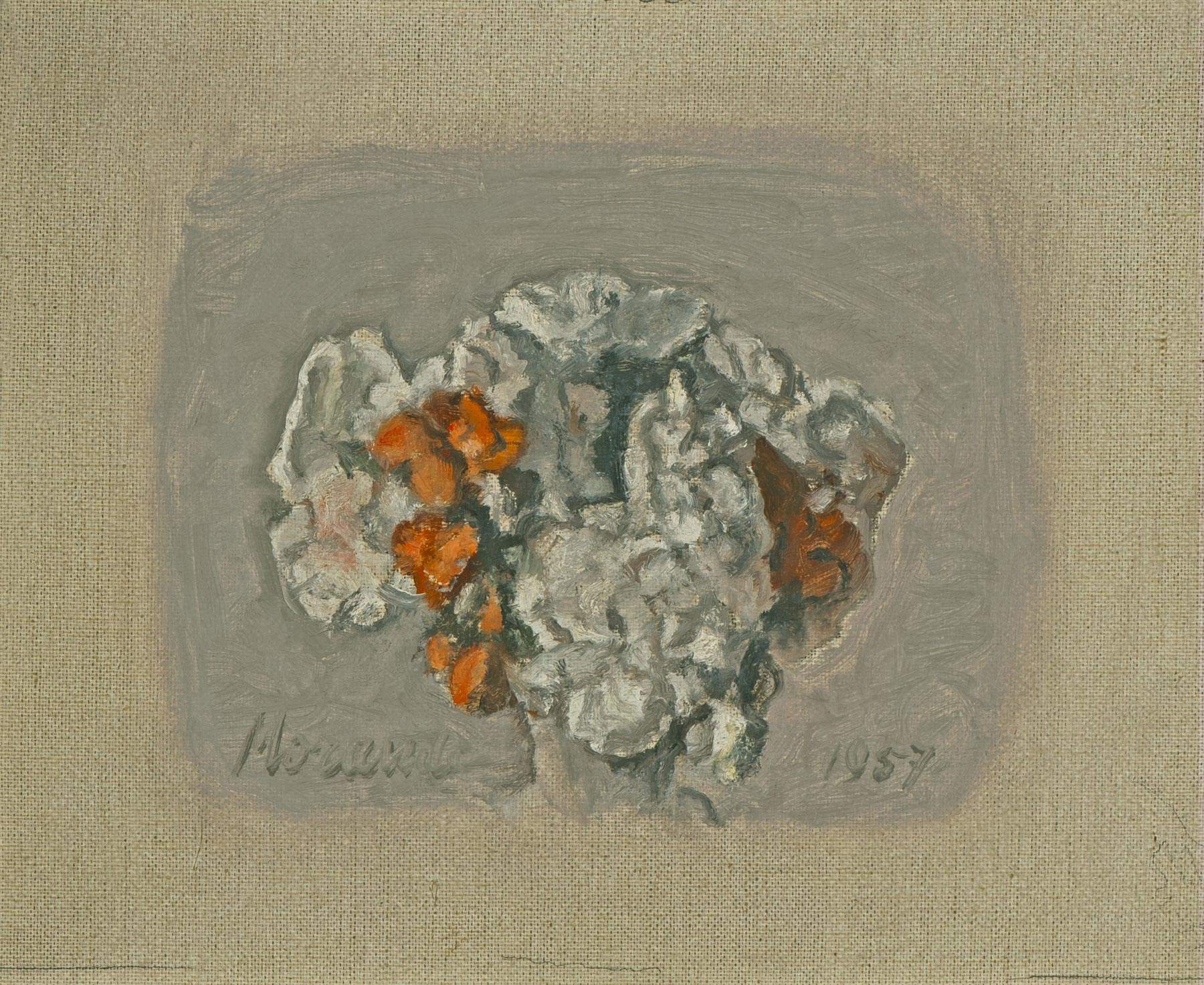On view from September 25 to November 15, 2020 at MAMbo in Bologna is the exhibition Morandi racconta. The Secret Fascination of His Flowers, all dedicated to flowers in the art of Giorgio Morandi (Bologna, 1890 - 1964), as well as the first of a cycle of exhibition focuses, Re-Collecting, which aims to investigate particular aspects, works and themes of the MAMbo and Museo Morandi collections. Morandi racconta, in particular, is a calendar of three bimonthly events, which includes in-depth initiatives on some themes of Giorgio Morandi’s artistic research.
The first focus is on flowers, a subject the Bolognese artist particularly loved. The thirteen works on display span the period from 1924 to 1957, that is, from the painting belonging to the museum, with freshly picked poppies, to the one from a private collection in which that same variety of flower is silk as are roses, a subject that recurs in the other nine canvases on display. Also on display are two porcelain objects from Casa Morandi, along with what remains of those silk or dried flowers that, precisely because of their perennial durability, were chosen by the artist as models for representation. Completing the itinerary are two etchings in which Morandi addresses the same theme, using real and fresh flowers, as well as a selection of letters and documents. The exhibition concludes with a video in which curator Alessia Masi delves into the theme of flowers throughout the span of Morandi’s research. The exhibition is also an opportunity to present to the public two new paintings received by the Morandi Museum on loan from Enos and Alberto Ferri: Flowers of 1946 (V. 501) and Flowers of 1957 (V. 1021).
Giorgio Morandi dealt with the floral theme throughout his artistic research, preferring to fresh flowers, depicted mainly in his early works, the dried or silk ones, a highly refined product of eighteenth-century Bolognese craftsmanship, which maintain their state unchanged and do not undergo changes over time independent of the author’s will. Like the other subjects, even the flowers are for Morandi only a necessary pretext for studying aspects of the composition, eliminating the superfluous to bring out the substance, the essence. What interests him is not so much to capture the organic fragility of the flower, its onatural decay, as to study its form, color and luministic aspects in order to go to the root of the visible, returning to the viewer passages of pure poetry.
Morandi always depicts flowers alone, the only protagonists of the scene, unlike other artists, such as Renoir (whom he greatly loved and studied), who include them in more articulate compositions. For Morandi, the only variation is the vases, sometimes represented in full or sometimes only partially, predominantly white, with an elongated body and, in very few cases, decorated with some ornamental motif. Their form is always strictly functional to the spatial composition, and in some works only the mouth is glimpsed to focus the viewer’s attention on the bouquet of flowers.
The period between 1920 and 1924 is one of the periods in which Morandi’s research on this theme is most intense. Often the artist prepares on the canvas a circular background within which, in an equally spherical manner, are inscribed the flowers presented by Morandi as a polychromatic and multiform organic entity, without any descriptive hesitation about the quality of the petals and buds, almost as if the aggregation of the corollas constituted an object in its own right. The same thing is repeated in some of the engravings, where the plate is worked only within a given perimeter with slight hatching, at the center of which the plant element is placed. If in the flowers of the early years one feels a debt to the painting of Rousseau, Cézanne, Chardin and especially Renoir (in the carnal and sensual rendering of the corollas), from the 1950s onward, however, the flowers are reduced to a rounded geometric form, in an undefined and almost breathless space. The theme is addressed by Morandi not only in painting and engraving, but also in drawing and watercolor, with compositions in which the extreme simplicity of the form, the volumetry of the small vessels and the shadow they cast on the background are evident, to reach, especially in the works of the last years, unique quotas of abstraction and dematerialization, becoming pure atmosphere.
A curiosity not known to everyone is the purpose with which Morandi painted a part of the flower paintings: they were often gifts to dear friends such as Roberto Longhi, Lionello Venturi, Piero Bigongiari, Eugenio Montale, Vittorio De Sica and Valerio Zurlini, or to the sisters themselves, who received them on the occasion of birthdays, as well as to other women linked to the artist by a deep relationship of friendship and esteem.
The exhibition will be accompanied by a publication produced by the editorial office of the Modern and Contemporary Art Area with a text by the curator and images of the works, distributed free of charge to the public. For all information you can visit the MAMbo website.
Pictured: Giorgio Morandi, Fiori, V.1020 (1957; oil on canvas, 22.5 x 28 cm; Enos and Alberto Ferri Collection, Deposit on free loan to Museo Morandi from July 2020)
 |
| Bologna, at MAMbo an exhibition on the flowers of Giorgio Morandi |
Warning: the translation into English of the original Italian article was created using automatic tools. We undertake to review all articles, but we do not guarantee the total absence of inaccuracies in the translation due to the program. You can find the original by clicking on the ITA button. If you find any mistake,please contact us.